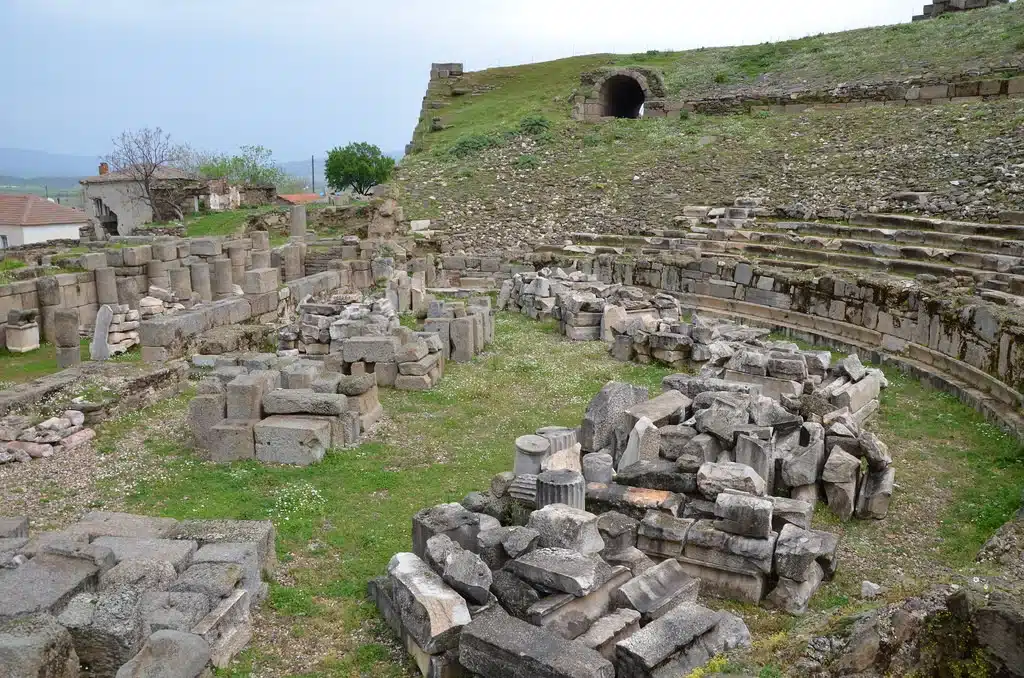A coat of arms is a visual expression, often decorated with complex symbols, that symbolizes the identity, history and values of an individual, family or community. Throughout history, coats of arms have represented concepts such as nobility, courage and heritage, and families and institutions have defined themselves through these symbols. The coat of arms has its roots in Medieval Europe and even earlier, evolving over time as a means of determining social status and identity.
Even today, coats of arms find a wide range of uses in both official and private contexts, from modern corporate logos to symbols of public institutions. These symbols with historical and cultural depth still remain an indispensable part of social and individual identities. In this article, we will provide a detailed look at coat of arms and its various uses, types and design processes.
What is Coat of Arms and Its Basic Definition
What is Coat of Arms? Meaning and Definition
Coats of arms are special designs that symbolize the identities of individuals, families, institutions or communities and are usually drawn on a shield. These designs represent a particular legacy, achievement or status and often feature colorful and detailed symbols, letters and figures. Coats of arms are used to trace lineage, tell family history and show social belonging.
Components and Structure of the Coat of Arms
The structure of a coat of arms typically consists of several main parts: shield , crown , supporters , devise (motto) and helm (helmet). The shield is the most prominent and central element of the coat of arms, and various colors (tinctures) and symbols are placed on it. The crown and helmet are usually found at the top of the coat of arms and indicate the rank or social status of that person or family. Supporters are characters standing on the sides of the shield, usually animal figures. Devise is the motto or slogan that is usually located at the bottom of the coat of arms and reflects the philosophy of that person or family.
History and Evolution of the Coat of Arms
Origin and Historical Development of the Coat of Arms
The origin of the coat of arms dates back to Medieval Europe and was initially used by knights for identification purposes on their armor. During this period, various markings were placed on the armor of knights so that they could be easily recognized on the battlefield or in tournaments. While the first coats of arms were limited to simple signs, more complex designs and symbols were developed over time. These symbols have come to express the historical narratives, achievements and origins of families or individuals.
Evolution of the Coat of Arms from the Middle Ages to the Modern Period
From the Middle Ages to the modern period, coats of arms gained popularity not only among the noble classes but also among the bourgeois class. With each passing century, coats of arms became more detailed and symbolic. In the modern era , coats of arms have also been adopted by companies, universities and even cities as part of corporate identities. With this use, coats of arms have become an important visual element that reflects not only the past but also the values, goals and identity of an institution. With the development of modern technology and art, coats of arms are frequently used in digital environments and have a place in popular culture. This evolution demonstrates the continuity and cultural significance of coats of arms across time and space.
Functions and Usage Areas of Coat of Arms
The Identification Role of the Coat of Arms
Coat of arms plays a critical role in determining the identity of individuals and communities . These symbols symbolize the history, achievements, values and even geographical origins of a person or a family with the elements they carry. For those interested in genealogy and family history, coats of arms serve as a tool to trace the past and strengthen family ties. In this aspect, coats of arms help individuals or groups identify themselves and their ancestors, which allows them to preserve their cultural heritage.
Official and Private Usage Areas
Coat of arms has both official and private uses . Official uses include government agencies, military units, cities, and academic institutions. Such institutions use coats of arms as a symbol of authority and formality. Special uses include family coats of arms and personal property. Additionally, companies and commercial enterprises can also use badges to reinforce their brand identity and emphasize their corporate values. These uses show how a wide range of coats of arms can be integrated and adapted for a variety of purposes.
Crest Types and Styles
Types of Coats of Arms in Different Cultures
Types of coat of arms have evolved in various ways in different cultures . European coats of arms are generally shield-shaped and feature various animals, plants and geometric shapes. In Asia, especially in Japan, the coats of arms known as “mon” carry more minimalist and stylized elements. In African and Native American communities, coats of arms may include more abstract symbols related to tribal identity and history. This diversity reveals how coats of arms have deep cultural roots and how they have different meanings around the world.
Modern Coat of Arms Designs and Adaptations
Modern coat of arms designs interpret traditional elements from a contemporary perspective. Today, crests are used in areas such as digital media, product design and even interactive media. These adaptations show that coats of arms can be relevant not only in history but also in the modern world. Modern designers take traditional heraldic elements and make them more dynamic and visually appealing, while also trying to preserve the symbolic meanings and history of the coats of arms. This process shows that coats of arms form a bridge between the past and the future and are in constant evolution.
Social and Cultural Importance of Coat of Arms
The Effect of Coat of Arms on Belonging and Heritage
Coat of arms serves an important social and cultural function as a tool that strengthens the sense of belonging of individuals and communities . As a tangible indicator of lineage and heritage, family crests help generations of family members understand their history and origins. These symbols also serve as a means of expressing the common identities and values of family members and transmitting these values to future generations. Among communities and peoples, coats of arms embody regional or ethnic identities and reinforce social unity and pride.
The Place of Coat of Arms in Art and Design
Arma has also gained a unique place in the world of art and design. Coat of arms aesthetics , in a wide range from traditional handicrafts to digital design ; It is used in a variety of media such as book covers, logos, flags and even fashion products. Artists and designers have the opportunity to add depth and meaning to their works by integrating the symbolic elements of coats of arms into their modern designs. This shows that the coat of arms is not only a historical and cultural symbol, but also has an aesthetic and decorative value.
Coat of Arms Design and Creation Process
How to Design a Coat of Arms?
Designing a coat of arms is a process that requires careful thought and creativity. The design process usually begins with researching the history and values of the person or group that the coat of arms to be designed will represent. Then, symbols, colors and shapes are chosen to reflect these features . The shape of the shield is determined and colors (tinctures) and symbols (charges) are added to it. Each color and symbol carries specific meanings, which enriches the overall meaning of the coat of arms. The design process ends with bringing the rigging components together in a harmonious and aesthetic way.
Things to Consider in Coat of Arms Design
The basic points to consider in coat of arms design are:
- Meaning and Appropriateness: The symbols and colors chosen must be appropriate to the values and history of the person or group represented.
- Readability and Simplicity: The crest should not be too complex; The design should be simple enough so that symbols and colors are easily recognized.
- Compliance with Traditions: Traditional rules and formats are generally important in coat of arms design. Therefore, these traditions must be well understood when designing the coat of arms.
- Aesthetic Integrity: It is important that the coat of arms creates an aesthetically attractive and eye-pleasing composition.
Famous Coat of Arms Examples and Stories
Coat of Arms Examples from the Historical and Contemporary World
Coat of arms examples from various periods of history and the contemporary world are important as concrete reflections of cultural and political history. For example, the coat of arms of the British Royal Family features important events and symbols in the country’s history; It is decorated with mythological creatures such as lions and birders and represents the power and nobility of the British monarchy. As a contemporary example, Canada’s coat of arms uses natural elements such as leaves and animals to symbolize its national identity, highlighting Canada’s importance to nature and cultural diversity.
Coats of Arms of Famous Families and States
Many famous families and states around the world have distinctive coats of arms. For example, wealthy and influential families such as the Rothschild family emphasize the prestige and history of their surnames with specially designed coats of arms. These coats of arms often contain symbols that have an important place in the family’s history. State coats of arms usually contain elements symbolizing the history, culture and natural features of that country. These coats of arms reinforce their national identity by using them in passports, government offices and official flags.
Frequently Asked Questions
What are the Differences Between Emblem and Logo?
The main differences between crest and logo lie in their intended use and design processes. While coat of arms is generally used in historical context and to express a sense of belonging; A logo is designed to represent the visual identity of a brand or company. Coats of arms usually have more complex and symbolic details, while logos are based on simplicity and immediate recognition.
How Does a Coat of Arms Become Official?
A coat of arms is usually made official through an official ceremony or government approval . In most countries, the use and registration of coats of arms is regulated and controlled by the relevant government offices. Procedures for the coat of arms to become official often require compliance with government heraldic rules. This process ensures that the coat of arms is added to official records and receives legal protection.
How Does Coat of Arms Ownership and Copyright Work?
Coat of arms ownership and copyrights protect the rights of individuals or organizations that own a coat of arms to use and control the coat of arms. These rights prohibit others from using the coat of arms without the permission of the coat of arms. Copyrights provide a legal framework to prevent illegal use of coats of arms and protect the rights of the original owner. Ownership of a coat of arms can usually be passed to family members by inheritance or can be officially transferred. Copyrights and usage permissions may vary from country to country and are generally governed by national copyright laws.





